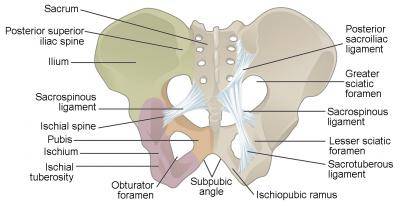Year :
2010
Title :
Biology
Exam :
JAMB Exam
Paper 1 | Objectives
21 - 30 of 49 Questions
| # | Question | Ans |
|---|---|---|
| 21. |
A food chain always begins with a? A. consumer B. decomposer C. producer D. primary consumer |
|
| 22. |
Mycorrhiza promote plant growth by? A. absorbing inorganic ions from the soil B. protecting it from infection C. helping it to utilize atmospheric nitrogen D. serving as a growth regulator Detailed SolutionMycorrhizal fungi allow plants to draw more nutrients and water from the soil.They also increase plant tolerance to different environmental stresses There is an explanation video available below. |
|
| 23. |
The barrier between maternal and fetal blood is the? A. placenta B. liver C. umbilical cord D. uterine wall |
|
| 24. |
The blood component that has the greatest affinity for oxygen is the? A. lymphocytes B. leucocytes C. erythrocytes D. thrombocytes |
|
| 25. |
Which of the following organisms is mainly found in the marine habitat? A. Achatina B. Tilapia C. Dog fish D. Tortoise Detailed SolutionDogfish are types of sharks that are common tropical open sea fishes, with others like mackerel, sea catfish, etc.There is an explanation video available below. |
|
| 26. |
The two halves of the pelvic girdle are joined together at the? A. pubic symphysis B. ilium C. pubis D. obturator foramen Detailed Solution
There is an explanation video available below. |
|
| 27. |
I. Adoption of appropriate nocturnal habits ll. Burrowing lll. Adjusting their internal body temperature. IV Possession of many sweat pores. A. I and IV only B. ll and lll only C. l and ll only D. l, ll and lll only Detailed SolutionIII & IV are considered invalid because some desert animals are poikilotherm.Poikilotherm or cold blooded animals are the animals (without sweat pores) whose body temperature vary with the temperature of the environment. e.g Amphibians and reptiles are poikilothermic animals. There is an explanation video available below. |
|
| 28. |
Low annual rainfall, sparse vegetation , high diurnal temperatures and cold nights are characteristic features of the? A. tropical rainforest B. desert C. montane forest D. guinea savanna |
|
| 29. |
The activity of an organism which affects the survival of another organism in the same habitat constitutes? A. an edaphic factor B. an abiotic factor C. a biotic factor D. a physiographic factor |
|
| 30. |
The average number of individuals of a species per unit area of the habitat is the? A. population density B. population frequency C. population size D. population distribution |
| 21. |
A food chain always begins with a? A. consumer B. decomposer C. producer D. primary consumer |
|
| 22. |
Mycorrhiza promote plant growth by? A. absorbing inorganic ions from the soil B. protecting it from infection C. helping it to utilize atmospheric nitrogen D. serving as a growth regulator Detailed SolutionMycorrhizal fungi allow plants to draw more nutrients and water from the soil.They also increase plant tolerance to different environmental stresses There is an explanation video available below. |
|
| 23. |
The barrier between maternal and fetal blood is the? A. placenta B. liver C. umbilical cord D. uterine wall |
|
| 24. |
The blood component that has the greatest affinity for oxygen is the? A. lymphocytes B. leucocytes C. erythrocytes D. thrombocytes |
|
| 25. |
Which of the following organisms is mainly found in the marine habitat? A. Achatina B. Tilapia C. Dog fish D. Tortoise Detailed SolutionDogfish are types of sharks that are common tropical open sea fishes, with others like mackerel, sea catfish, etc.There is an explanation video available below. |
| 26. |
The two halves of the pelvic girdle are joined together at the? A. pubic symphysis B. ilium C. pubis D. obturator foramen Detailed Solution
There is an explanation video available below. |
|
| 27. |
I. Adoption of appropriate nocturnal habits ll. Burrowing lll. Adjusting their internal body temperature. IV Possession of many sweat pores. A. I and IV only B. ll and lll only C. l and ll only D. l, ll and lll only Detailed SolutionIII & IV are considered invalid because some desert animals are poikilotherm.Poikilotherm or cold blooded animals are the animals (without sweat pores) whose body temperature vary with the temperature of the environment. e.g Amphibians and reptiles are poikilothermic animals. There is an explanation video available below. |
|
| 28. |
Low annual rainfall, sparse vegetation , high diurnal temperatures and cold nights are characteristic features of the? A. tropical rainforest B. desert C. montane forest D. guinea savanna |
|
| 29. |
The activity of an organism which affects the survival of another organism in the same habitat constitutes? A. an edaphic factor B. an abiotic factor C. a biotic factor D. a physiographic factor |
|
| 30. |
The average number of individuals of a species per unit area of the habitat is the? A. population density B. population frequency C. population size D. population distribution |
